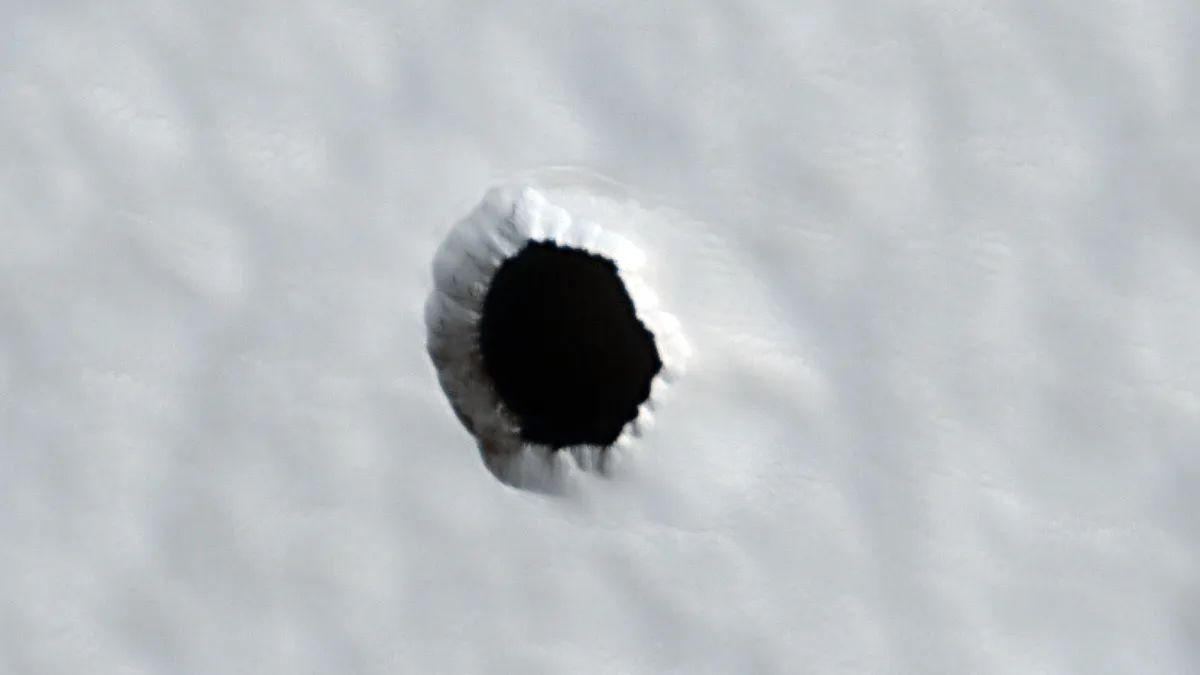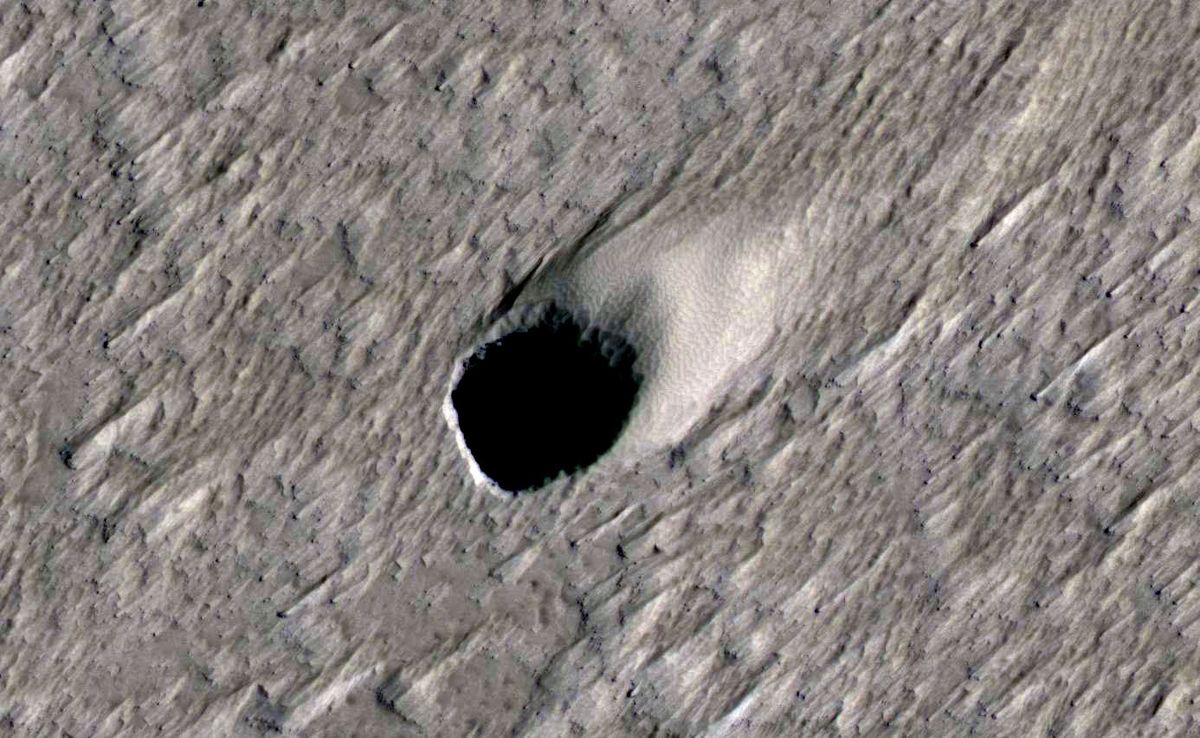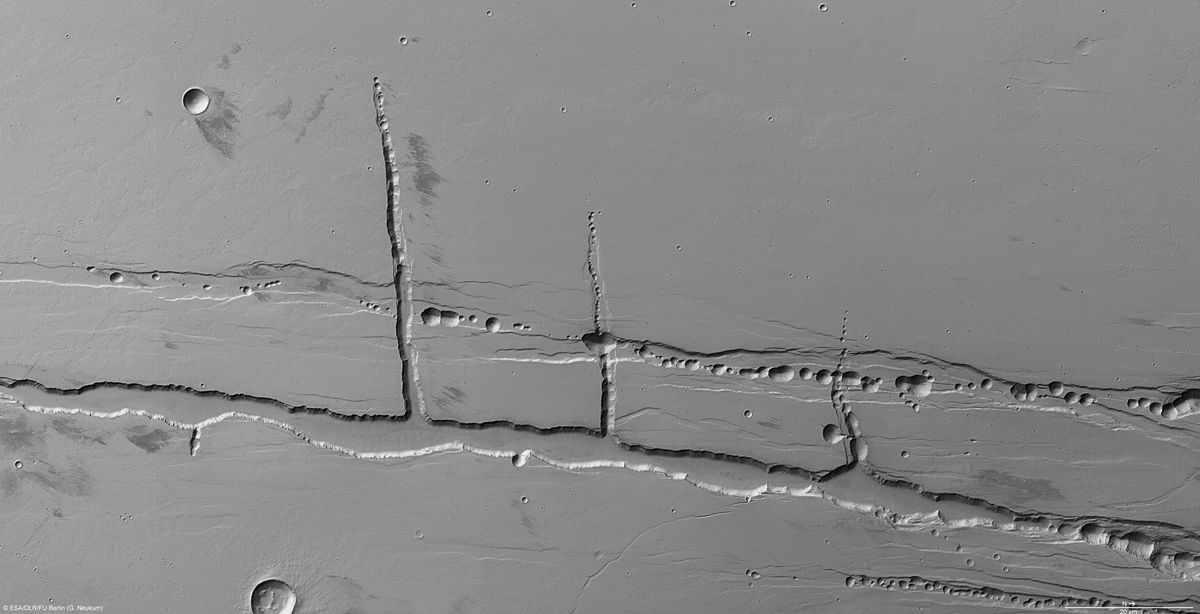Follow us on Google News (click on ☆)

The chasm on Arsia Mons, imaged by the HiRISE instrument on the Mars Reconnaissance Orbiter.
Credit: NASA/JPL-Caltech/UArizona
This chasm, located on a lava flow of Arsia Mons, intrigues with its appearance of a vertical shaft. Measuring only a few meters (approximately 10 feet) wide, it is part of a series of similar formations observed on Mars. Its location on the volcano's flanks suggests a potential connection with the region's past volcanic activity.
Mars Reconnaissance Orbiter, equipped with the HiRISE instrument, has flown over the Martian surface at an altitude of 160 miles (256 kilometers). The collected data offers detailed views of this chasm, allowing scientists to formulate hypotheses about its formation and internal structure.
Martian chasms could provide natural shelters for future manned missions. Due to Mars' thin atmosphere and lack of a global magnetic field, cosmic radiation poses a significant threat to astronauts. These cavities could thus provide essential protection against these harmful radiations.

Another image from the HiRISE instrument on the Mars Reconnaissance Orbiter.
Credit: NASA/JPL-Caltech/UArizona
Scientists are exploring several hypotheses regarding the origin of these chasms. One of the main theories is that they result from the collapse of underground lava tubes formed when the volcano was active. Other theories include tectonic phenomena or the dissolution of rocks, similar to karst formations on Earth.
The potential impact of these chasms on astrobiological research is also significant. The cavities could have served as refuges for microbial life forms in the past, and perhaps even today. Exploring these sites could thus provide valuable clues about the presence of life on Mars.
Future technologies, such as drones and rovers, will play a crucial role in the exploration of these chasms. Missions similar to the Ingenuity helicopter could descend into these cavities to study their depths and internal structures, thus providing concrete answers to many scientific questions.

Image from the ESA Mars Express mission.
Credit: ESA/DLR/FU Berlin (G. Neukum)